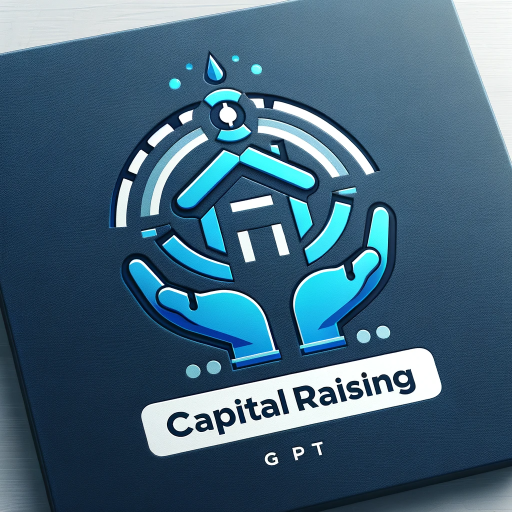Python Plotting Power Plays-data visualization with Python matplotlib
AI-powered Python plotting and analysis.
Show me how to create a bar chart in Python.
How do I customize my plot's color scheme?
Can you guide me through integrating matplotlib with Pandas?
What are the best practices for data visualization in Python?
Related Tools
Load More
Plot AI
Specialized in the Art of Data Visualization, with a Focus on Bioinformatics Applications. Now comes with DNA Barcode Generator. **constantly updating**

Chart Analyst
Analyze any chart, instantly. Just paste or upload an image of your chart. Include as many indicators as you want - great way to learn! Not financial Advice, for educational use only!
MatPlotLib Assistant
Maintained by Whitebox at https://github.com/Decron/Whitebox

GPTChart
Visualize charts and graphs from data input to facilitate your detailed analysis.

Charts, Graphs and Statistical Analysis GPT
Expert in data analysis and creating charts/graphs.

Dash Plotly Pro
Formal, direct expert in Dash Plotly and related tech.
20.0 / 5 (200 votes)
Introduction to Python Plotting Power Plays
Python Plotting Power Plays is a specialized service designed to guide users through the process of creating advanced and insightful data visualizations using the Python programming language, particularly through the matplotlib library. Its main purpose is to help users not only understand how to create plots but also how to tailor them to specific needs, incorporating elements of storytelling, data analysis, and visual aesthetics. The service focuses on teaching users the underlying principles of effective data visualization, covering both technical aspects (such as code writing, data manipulation, and integration with other libraries like pandas and NumPy) and aesthetic customization (such as color schemes, plot sizing, and annotations). The design is centered on providing hands-on assistance through detailed examples and explanations of how to implement various types of plots (e.g., line plots, scatter plots, bar charts) and customize them for specific purposes. Scenarios that illustrate this include generating plots that reveal trends in large datasets or visualizing complex relationships across multiple dimensions. Python Plotting Power Plays emphasizes clarity and precision in the graphical representation of data, making it easier for users to communicate insights effectively.

Key Functions of Python Plotting Power Plays
Data Visualization with matplotlib
Example
Creating a scatter plot to display the relationship between sales and marketing spend.
Scenario
In a business setting, you may need to visualize how marketing investment correlates with sales performance. Using matplotlib, you can create a scatter plot that not only shows this relationship but also includes custom features like a regression line, tooltips, or different colors to represent various product categories. This helps decision-makers quickly grasp the insights from raw data.
Data Preprocessing and Integration
Example
Cleaning and transforming raw data using pandas and NumPy, followed by visualizing it using matplotlib.
Scenario
Often, raw data is messy or incomplete. Python Plotting Power Plays helps you preprocess this data by removing missing values, standardizing formats, or calculating additional metrics before creating visualizations. For instance, in a healthcare study, if patient data is incomplete or in different formats, you can clean the data using pandas, aggregate statistics, and visualize trends such as the rise in specific conditions over time.
Advanced Plot Customization
Example
Customizing a time-series plot with multiple axes, gridlines, and annotations for a financial analysis report.
Scenario
When presenting financial data, it's critical that your plot highlights key information clearly. For example, a time-series plot of stock prices over several years could be enhanced with multiple axes to show different stock indices, custom gridlines for better readability, and annotations to highlight market events. This level of customization ensures that the visualization communicates the full story behind the data.
Ideal Users of Python Plotting Power Plays
Data Analysts and Scientists
This group consists of professionals who work with large datasets and need to derive insights from them. They frequently use Python for data analysis and need to communicate their findings clearly through visualizations. Python Plotting Power Plays is ideal for them as it helps create polished, insightful plots while ensuring the data is properly processed and presented. Data analysts and scientists benefit from detailed control over plot aesthetics and data integration with Python's ecosystem.
Students and Educators
Students studying data science, statistics, or any field that requires data visualization will benefit from Python Plotting Power Plays. Educators can also use it as a teaching tool to help students learn the nuances of creating effective visualizations. The platform provides both foundational knowledge for beginners and advanced techniques for those looking to deepen their understanding. This group benefits from learning not just the 'how' of plotting but the 'why'—the theory behind effective visual representation of data.

Guidelines for Using Python Plotting Power Plays
Step 1
Visit aichatonline.org for a free trial without login, no need for ChatGPT Plus.
Step 2
Ensure you have Python installed along with the matplotlib library to work on visualizations. Install it using the command `pip install matplotlib`.
Step 3
Start by preparing your dataset. Clean and preprocess your data using pandas or NumPy, ensuring it's in a format that can be visualized easily.
Step 4
Use Python Plotting Power Plays by integrating matplotlib to create different types of charts (e.g., line plots, bar charts, histograms) based on your data.
Step 5
Optimize your visualization by customizing titles, labels, colors, and layouts for clarity. Use tips like adjusting figure size for better presentations and reports.
Try other advanced and practical GPTs
Data Analysis: R Programming Essentials
AI-powered R programming assistant for data analysis

Find Jobs - Real time Open Jobs (US, EU...)
AI-Powered Real-Time Job Search

🦾 22.500+ Best Custom GPTs v2.0 (5.0⭐)
AI-powered custom GPTs for everyone

Automated Career Profile Analyst and Resume Tailor
AI-Powered Career and Resume Tailoring

Video Summary
AI-powered YouTube video summarization.

Ask the Shaman
AI-powered spiritual guidance and healing.

100 Experts Collective
Your AI-powered expert network

Crypto Trends - Real time Coin price
AI-powered real-time crypto price insights

Say It Right Writer
AI-powered writing made clear and concise.

Lingua Maven
AI-Powered Linguistic Insights

Anki QuickCard
AI-powered flashcards for effective learning

Capital Raising GPT (by CapitalHQ)
AI-powered Capital Raising Assistance

- Financial Analysis
- Data Science
- Research Reports
- Business Analytics
- Interactive Dashboards
Q&A on Python Plotting Power Plays
How do I get started with Python Plotting Power Plays?
First, visit aichatonline.org for a free trial without the need for login or ChatGPT Plus. After that, set up Python and install matplotlib to begin creating data visualizations. Ensure you have your dataset cleaned and ready.
What types of plots can I create?
With Python Plotting Power Plays, you can create a wide variety of plots, including line graphs, bar charts, histograms, scatter plots, heatmaps, and more. You can also customize each plot with labels, legends, and color schemes.
What are some common use cases for Python Plotting Power Plays?
It’s commonly used in academic research, business reporting, data science projects, and interactive data exploration. It’s also helpful in presenting trends, comparing datasets, and delivering insights from large datasets.
Do I need to know coding to use this tool?
Yes, a basic understanding of Python coding is required. You'll need to write Python scripts to clean your data and utilize matplotlib’s extensive features to visualize it effectively.
Can I integrate this with other Python libraries?
Absolutely! Python Plotting Power Plays works well with libraries like pandas for data manipulation, seaborn for advanced statistical visualizations, and NumPy for numerical operations, enhancing the overall plotting process.